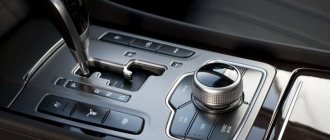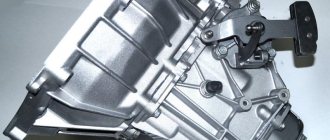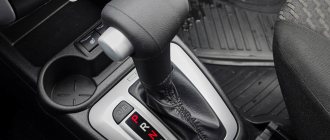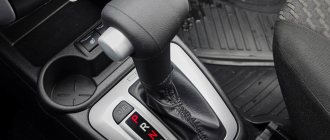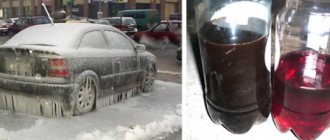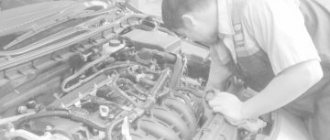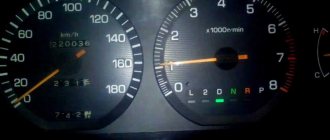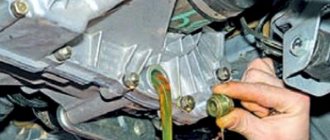There are many reasons why automatic transmission jerks. This could be insufficient ATF fluid level in the gearbox, clogged oil filter, worn friction discs, clogged oil cooler, damaged oil pump, problems with the valve body and/or solenoids. Often, automatic transmission kicks arise as a result of unscrupulous service by the car owner or by the mechanics at the service station who were instructed to do this. Accordingly, in most cases, in order to prevent shocks and kicks in the automatic transmission, it is enough to service it on time and efficiently.
Many automakers deliberately mislead their customers by telling them that the modern automatic transmission on their cars is maintenance-free and there is no need to mess with it. In fact, after purchasing a new car and driving it for about 100 thousand kilometers (of course, this figure is approximate and conditional), shocks may occur when switching automatic transmission modes. The deception on the part of the “officials” is that the car owner will be forced to come to them for repairs. The following are the causes and methods of eliminating and preventing them in order from the most common to the “exotic”.
Insufficient ATF fluid level
The production of ATF fluid in an automatic transmission is one of the most common reasons why an automatic transmission jerks during acceleration or at speed . The peculiarity is that it is very liquid, and it is for this reason that it is not called gear oil. In addition to lubricating and protective functions, this composition performs one more action - it transmits torque from one part of the torque converter to another. Accordingly, the load on the liquid is greater than on conventional oil, and its performance characteristics and level quickly decrease. It is these indicators that lead to the fact that the automatic transmission begins to work in difficult conditions, which ultimately leads to the appearance of jolts and/or kicks.
Accordingly, in order to restore the functionality of the automatic transmission and prevent the occurrence of runout in the future, it is necessary to replace the transmission oil. And do this periodically approximately every 40...50 thousand kilometers. If replacing the ATP fluid does not help, additional diagnostics of the box is needed.
Causes of shocks when shifting gears
It happens that shocks appear when switching to a lower or higher speed. Let's look at the causes and solutions to the problem.
Insufficient fluid level in transmission
Lack of lubrication will lead to incorrect operation of the unit as a whole. If it becomes more difficult to switch gears from first to second or third, you need to diagnose the oil level.
Remedy
The problem of automatic transmission kicking when hot when there is a lack of fluid can be eliminated by adding it to the system.
It is important to consider one point. When adding oil to the transmission, you can only use the fluid that is already in the transmission. If the lubricants are different in composition, this can lead to their mixing and loss of properties. As a result, a complete replacement of the substance will be required. It is necessary to diagnose the lubricant level in the transmission and make sure that the cause of the shortage is not related to its leakage. This problem can occur when the seals or sealing elements wear out. You will need to drain all the oil from the system and then refill it.
A detailed video on the topic of eliminating transmission fluid leaks using the example of a Mercedes car is presented below (the material was filmed by user StaniSlav B.).
Dirty transmission oil
Contaminated fluid in the gearbox often causes jolts and kicks. Deposits usually form as a result of mixing different oils or when using the same lubricant for a long time.
We recommend: Self-repair of VAZ-2103 engine
Remedy
This type of problem can be eliminated by thoroughly cleaning the gearbox. For this purpose, special flushing oil is used. Depending on the amount of dirt in the system, this process may need to be performed several times. You need to do the following:
- Warm up the engine to operating temperature.
- Place an old bucket or cut-off bottle under the transmission. The container will be used to collect used lubricant.
- Unscrew the drain plug or bolts on the oil pan, wait until all the fluid comes out of the system, and screw it back.
- Having previously read the instructions on the packaging label, fill the gearbox with flushing oil in the required volume. Turn on the engine and perform a test drive.
- Drain the lubricant from the system again and check its quality. If necessary, clean the unit again.
- Add new oil to the box.
Detailed instructions for cleaning an automatic transmission yourself using the example of a Mercedes Vito are presented by the Secret Garage channel.
Insufficient heating of the transmission fluid
The reason why the automatic transmission kicks when hot may be due to insufficient heating of the lubricant. Because the fluid temperature is too low, the main components of the transmission unit cannot heat up. This contributes to the formation of tremors.
Remedy
The only solution to the problem is to warm up the box to operating temperature.
Incorrectly selected ATF fluid
Please note that the transmission of a particular vehicle must use ATF fluid of a certain viscosity and with the performance characteristics required by the vehicle manufacturer (or transmission, if the automaker only performs the assembly). Accordingly, you need to refill with the “correct” liquid. Because oil with unsuitable parameters can also lead to jolts or kicks when the car is moving.
Another common case is that the automatic transmission jerks “when cold ,” in particular, after a long period of inactivity in the cold, for example, in the morning. However, after warming up the problem disappears. This means that the car owner initially selected the wrong oil, which thickens in the cold and does not ensure normal operation of the automatic transmission. Accordingly, you need to choose a thinner oil.
Automatic transmission breakdown detection
On most modern cars, in the event of shocks or twitching of the automatic transmission, error codes are recorded in the memory of the on-board computer, which display certain malfunctions that occur with the car. As a rule, along with the appearance of errors, the “Check engine” warning light lights up on the dashboard.
However, there are cases when, when errors appear, the car’s on-board computer does not consider this error to be a serious enough breakdown, or this error appears and disappears, the computer does not turn on the “Check engine” warning light. That is, the car owner cannot understand whether there are any errors currently in the memory of the on-board computer and whether they could be the cause of automatic transmission jolts.
In this case, the car owner needs to read errors from the memory of the car’s on-board computer and decipher them. This can be done at almost any car service for money, or independently, using a special error scanner.
There are convenient universal car adapters that will help you read errors on any car using a regular smartphone. Such an adapter can significantly save time and money for the car owner (on car diagnostics). For example, the ELM-327 adapter is very convenient and popular, which can be ordered with home delivery.
The next step will be to decipher the error code and determine whether it affects the operation of the automatic transmission. Error codes for each car model can be found freely available on the Internet.
Oil filter
Even in the most modern and technologically advanced automatic transmission, where the drive gears are adjusted to each other with very high precision, metal shavings still form in the transmission fluid over time. This is due to the banal wear of metal parts. And the more wear, the more chips. Well, wear and tear is determined by the mileage and operating conditions of the car.
Accordingly, the oil filter in the automatic transmission system becomes clogged over time and cannot pass the required amount of oil through itself. This leads to a decrease in operating pressure in the system , which causes friction discs to suffer. They do not stop at the right moment, and are not clamped with the necessary force. Accordingly, the discs begin to slip , which is the reason for the appearance of shocks when changing gears, both when accelerating and when braking the car. In the worst case, when there is very little oil and the load on the discs is high, they can also burn out.
This situation is especially relevant when the automatic transmission jerks “on hot” . That is, when the engine and transmission system themselves are very hot, and then low pressure and an insufficient amount of ATP fluid occur.
The conclusion suggests itself - it is necessary to monitor the condition of the transmission oil filter, use high-quality ATF fluid with the parameters specified by the automaker. And of course, change the filter and the oil itself on time.
What does “automatic transmission kicks” mean?
Car drivers encounter such a problem as a delay in gear shifting when shifting the gearbox from one gear to another. It happens while driving, when the speed decreases or increases, the car begins to twitch. This behavior of the car occurs due to breakdown of transmission elements. In driver slang, this is called “kicking in the automatic transmission.” Novice car enthusiasts often don’t know how to understand that the automatic transmission is kicking, or they think that it’s a problem with the engine.
Experienced car owners distinguish kicks into the following categories:
Before you solve the problem of automatic transmission kicking yourself or replace it with a new one, you need to find out the cause of these kicks.
Friction discs
The clutches in an automatic transmission act as a clutch. Their task is to start or stop the necessary gear. Friction discs compress and decompress. And they are driven by transmission fluid, which circulates through the system under pressure. Accordingly, if the pressure is not enough, then the discs are not able to compress and unclench with the required force. That is, they simply slide and rub against each other, and if there is a lack of oil, they heat up and burn.
In the case when one or more friction discs are critically burnt , while the other clutches are still in more or less normal condition, shocks occur when shifting on a specific pair of gears . For example, when moving from first to second, from second to third, and so on. Moreover, this can happen both when increasing gears and when decreasing them, that is, when braking the car.
In turn, this leads to rapid aging of the ATF fluid. For this reason, it also burns, becomes black and loses its properties. It also acquires a specific burnt smell . In a completely “neglected” case, when the friction discs are significantly worn out and/or simply burnt, the gears in the gearbox will not be able to stop or start if necessary. This situation leads to the fact that when switching gears of the automatic transmission, kicks or twitching are felt. You can also often hear unpleasant crunching sounds coming from the gearbox.
If the discs are critically worn, then gear shifting is completely impossible. Another option is that when you put the car in neutral, it still continues to move. Wear of the friction discs is a very serious breakdown, and without dismantling the automatic transmission and opening it, repair is impossible.
Gearbox faults
Gearbox malfunctions will differ due to their design features, but both manual and automatic transmissions have typical signs of failure of certain components. The table contains a description of the main symptoms and solutions to problems Read more
What does it mean when the automatic transmission kicks?
So, car owners are often faced with the fact that various malfunctions of an automatic transmission significantly reduce driving comfort or make further operation of a vehicle with this type of transmission completely impossible.
As a rule, most often a car with an automatic transmission begins to twitch; when changing gears, jerks, jolts, and impacts occur. Less often, gears can be “dragged”, there is a delay in switching, and so-called slipping occurs.
Let us immediately note that in practice, automatic transmission kicks look like this:
Also, the automatic transmission can only push when it’s cold, the automatic transmission kicks when it’s hot or occurs constantly. You can also note that the box can only push in certain gears (for example, when moving from 1st to 2nd, from 3rd to 4th, etc.).
One way or another, such operation of the gearbox indicates problems and the need for automatic transmission diagnostics. In this case, based on one or another indirect signs indicated above, you can try to more accurately determine the nature of the malfunction.
Oil cooler
The purpose of the radiator in an automatic transmission system is to cool the ATF fluid. When its performance characteristics decrease, the oil becomes very hot and burns. This not only spoils the fluid itself, but also affects the operation of the automatic transmission as a whole for the reasons described earlier.
The main reason why the radiator gradually fails is the replacement of transmission fluid under pressure . When performing this procedure on so-called high-pressure apparatuses, the system is installed in the gap between the cooling radiator and the automatic transmission itself. Next, the old oil is removed from the system under pressure and new oil is poured in its place. However, the process does not imply either replacing the oil filter or washing the transmission pan, including the radiator. Therefore, a situation arises when dirt from the bottom of the sump is forced to the top and clogs individual elements of the transmission, in particular, the radiator, oil filter, valve body, and solenoids.
The radiator consists of many small pipes and honeycombs, which simply become clogged with dirt. And as the temperature rises, it burns to its walls, which significantly reduces the efficiency of the oil cooler.
Accordingly, in order to get rid of shocks when changing gears in an automatic transmission, one of the options is to clean the ATF cooling radiator. From now on, it is advisable not to change the ATF fluid under pressure, but to change the filter along with it, and also clean the radiator (magnets). This will cost more, but in the long run it will extend the life of the automatic transmission as a whole.
Why does the automatic transmission kick: the main reasons
First of all, a hydromechanical automatic transmission is a rather complex unit. An automatic transmission uses a large number of devices and different mechanisms.
It is quite obvious that the proper operation of the machine directly depends on the level, quality, properties and condition of the ATF fluid. If the fluid is dirty, has lost its properties, etc., then the box will inevitably begin to push and kick while shifting gears.
Taking into account the fact that in a hydromechanical automatic machine the connection to the engine is realized through a torque converter (fluid coupling, gas turbine engine), it turns out that it is the working fluid that transmits torque.
At the same time, the ATF oil works under load, gets very hot, wear products from the gearbox itself accumulate in it, etc. As a result, the viscosity of the liquid changes (liquefaction occurs or ATP thickens). In any case, both in thick oil and in liquid oil, the gearbox will shift jerkily, push and kick.
Moreover, in practice, a change in the properties of the ATP liquid occurs already at 40-60 thousand km. mileage You also need to take into account that if the car is new or the gearbox has been repaired, after the break-in of the ATF unit is completed, it is better to change it (after 5-10 thousand).
Otherwise, often the unit is designed, on average, for 250-300 thousand km. mileage will fail by 150 thousand. At the same time, the first signs of an impending problem will appear in the form of pushes and jerks to 100-120 thousand.
Sooner or later, the filter becomes clogged, that is, ATF is pumped worse under conditions of reduced filter capacity. The result is that the oil pressure in the automatic transmission decreases. In this case, the operation of the friction discs is disrupted, as they do not have time to stop at a strictly specified moment. The clutches slip, and the driver feels this slipping in the form of a push when changing gears.
If the oil pressure decreases, the clutches do not provide proper compression and begin to slip and wear out heavily. The heating increases due to slippage, the oil in the automatic transmission turns black, and a burning smell appears.
It is quite obvious that problems with the clutches mean that the gears do not stop and release at the correct time. This results in the transmission jerking or kicking when changing gears, and the driver feels bumps and jerks.
Please note that such a breakdown is serious, that is, changing the automatic transmission oil and filter will not solve the problem. In other words, the box needs to be removed, disassembled, troubleshooting carried out, and only then, as part of the repair, clutches and other worn elements must be replaced.
Overheating of ATF in the automatic transmission and low transmission fluid pressure
Let's start with the fact that many automatic transmissions (with the exception of some types of automatic transmissions on budget small cars) have an additional oil cooling radiator. This solution is necessary in order to lower the temperature of the working fluid and maintain its viscosity.
This solution, on the one hand, allows you to displace dirty oil and replace it with fresh liquid. However, the disadvantage of this replacement method is that the transmission pan is not removed, the pan is not washed and the magnets are not cleaned of chips, the automatic transmission filter is not replaced, etc.
As a result, the radiator is not washed, dirt and deposits from the pan get into the radiator, and the automatic transmission filter becomes even more clogged. Contaminants also get into the hydraulic unit (hydraulic plate), solenoids (valves) become clogged, etc.
It becomes clear that in this case, the liquid does not pass through the clogged filter in full, and overheating of the automatic transmission also occurs due to the low throughput of the thin channels of the oil cooler.
Oil pump
In fairness, it is worth noting that the pump very rarely fails. Depending on the design, the pump can be installed in one of two places:
- directly behind the valve body;
- below on the pallet, unwinding with a chain from the drive shafts of the automatic transmission.
The design of the pump is very reliable, however, if there is mechanical damage or a manufacturing defect, it can also break. Accordingly, under such conditions, the transmission fluid will stop circulating at operating pressure or at all. The pressure will drop, which will lead to jerking when shifting gears, and in critical cases - complete failure of the gearbox.
Shocks due to low oil level
The third reason that can make the machine “twitch” is the low oil level in the box.
The oil in an automatic transmission is the working fluid, thanks to which gear shifts occur, so its quantity in the box must be sufficient.
Sometimes it happens that the level can drop below o, and the owner does not have time to notice it. The reasons are simple - the oil in the machine may leak, or when replacing it, the technician may “forget” to set the required level.
One way or another, you need to monitor the oil level in the box and if it becomes lower than required, add oil to the automatic transmission.
Hydraulic unit
The second name for the hydraulic unit is hydraulic plate. This part of the automatic transmission is the control part, and consists of many small channels through which ATF fluid directly moves under pressure. Briefly, it can be noted that each gear has its own channel with liquid, which, under pressure, causes the clutches to compress or decompress.
Accordingly, if the mentioned small channels become clogged with dirty liquid, then the pressure will not be enough for normal operation of the clutches. They will not be able to compress and unclench normally, and jerks or jolts will appear in the behavior of the car.
The reasons for this are still the same - using dirty oil (delayed replacement), replacing ATF fluid under pressure. Cleaning the mentioned channels is possible only by dismantling and disassembling the gearbox, and this can be quite expensive.
Another reason associated with the valve body is plate wear . The fact is that the hydraulic unit consists of two plates, between which there is a special plate. The ball-shaped rod from the solenoid rests against it. This ensures that the pressure is closed (fixed). There is a hole in the specified plate, which is blocked by the specified ball. Over time, the hole breaks, which leads to minor jolts when changing gears on an automatic transmission. In order to get rid of this problem, it is necessary to grind the mentioned plate, or replace it with a new one in case of significant wear. In any case, it is necessary to dismantle the gearbox for detailed diagnostics and repairs.
Wiring
Well, and probably the last thing is the wiring to the same solenoids. Wires go to them, from the ECU , which distribute the impulses. If it burns, or oxidizes, or breaks, the performance will be impaired. IT'S JUST NO CONTACT, again the automatic transmission will kick, push, etc.
These are the main reasons why such malfunctions may occur! You can - but what about the gears and the planetary mechanism in general? Guys, it also breaks, but often you won’t get into gear AT ALL! Not like kicking or pushing.
Now let's watch the video version
This is where I end, I tried to talk in detail about the problems, I think it helped! Sincerely yours, AUTOBLOGGER.
(
85 votes, average: 4.51 out of 5)
Solenoids
Solenoids regulate the supply of transmission fluid to the valve body channels mentioned above. They are special valves that open and close at the right time. They work with the help of rods included in their design. The return stroke of the rod is ensured by a mechanical spring.
Over time, the solenoid (or solenoids) can fail due to mechanical failure or simply old age. Accordingly, they either do not close or do not open the channel. The latter happens more often, that is, the solenoid leaves the desired channel in the closed position constantly. Often the solenoids do not work smoothly, but jerkily, and they get jammed. Accordingly, this affects the operation of the entire automatic transmission; it jerks when switching, and in all modes.
The situation is aggravated by the fact that solenoids in modern cars are often made of plastic. Accordingly, at high temperatures they can melt, lose their geometry and stop working correctly. There are no such problems with metal solenoids. To repair solenoids, it is necessary to dismantle the valve body, clean and adjust it, including the solenoids.
Why does the automatic transmission knock when the gear is engaged?
With this problem, you need to understand how well the car has warmed up. Next, you should check the transmission fluid level in the unit. You need to know when the oil was last changed. Each of these criteria affects why the automatic transmission kicks. It is best to leave the vehicle in a warm place to avoid excessive cooling. This measure is the simplest and most effective.
- Google+
- LJ
- Blogger
It is necessary to warm up the car. If you do not warm up the engine before driving, problems may arise. Since cold oil is thick in consistency, various coarse particles are thrown from the bottom of the compartment into different parts of the box.
They are deposited on various components and reduce the adhesion of parts to each other. Hot oil washes away sediment from the gear, which guarantees stable operation.
Wiring from the ECU
The operation of the automatic transmission is controlled by the ECU - an electronic engine control unit. Using electrical signals along laid wires, it transmits information to the solenoids on how to behave at a particular moment in time. Quite rarely, but this can happen in older cars: the wiring oxidizes or breaks completely, and contact may be lost on one or more wires.
All this leads to incorrect operation of the gearbox, which can also result in jolts and incorrect gear shifting. It is worth noting that this is a fairly rare breakdown, and it can only be calculated using electronic error and malfunction scanners.
Electronic control unit
In even rarer cases, the culprit that causes the automatic transmission to kick is the electronic engine control unit. In particular, its firmware may simply fail. However, in such “exotic” cases, not only jerks when changing gears, but also other malfunctions may appear. For example, the engine speed will be unstable, when the lever is mechanically switched to a certain mode, the box will not respond to this, and so on. In this case, it is necessary to perform computer diagnostics of the electronic unit. Moreover, in this case, it is advisable not to use the machine, but instead to bring a diagnostic device (preferably a laptop with the necessary program) directly to the machine. It is advisable not to reflash the control unit yourself. Firstly, this requires special hardware and software, and secondly, this is a responsible matter, and it is better to entrust this to specialists who provide a guarantee for their work.
Additional reasons
In some cases, it is not the gearbox that is to blame for automatic transmission kicks, but a poorly tuned engine. In particular, the throttle valve, spark plugs, injectors, air filter, engine oil. This is especially true for the throttle valve. It is advisable that it be clean to ensure normal air passage. Same with the air filter. In general, the integrated work of the elements listed above ensures a reduction in shocks during shifting and eliminates lengthy gear changes in automatic transmissions.
The causes of shocks when switching an automatic transmission may be the cushions on which the engine and transmission are mounted. The fact is that the motor and the box attached to it in the car’s design are mounted on special “pillows”, which are two metal plates with a rubber insert located between them. Over time (including under the influence of vibrations), rubber loses its properties, in particular, elasticity and does not work properly. This leads to shocks when changing gears. You can get rid of this by replacing the pillow/pillows with new ones.
On many older cars, the automatic transmission is controlled by a cable. The same goes for the accelerator pedal. Accordingly, you can try to adjust the switching of individual speeds at certain parameters - speed and torque. However, it is unlikely that you will be able to do this on your own; it is better to seek help from a car service center.
In old automatic transmissions used in foreign cars produced in 1990...2000 (mostly four-speed), brake bands were used instead of brake clutches. This is due to the simplicity and low cost of the design. However, the problem is that they failed quite quickly. And this was reflected, in particular, when switching not between all gears, but only between certain pairs of them. For example, between 1 and 2, 3 and 4. A classic example of such a box is an automatic transmission from Ford, model 4F27E. Repair in this case is impossible, and such a breakdown can only be “cured” by completely replacing the brake band.
I checked all the reasons - it didn’t help
If, after checking all the reasons described above, there is still no one that interferes with the normal operation of the automatic transmission, then it’s time to go to a good service center to diagnose the transmission, and the sooner the better.
In a good service, diagnostics are relatively inexpensive, and qualified technicians can easily express thoughts about the causes almost immediately, which can prevent further development of the breakdown and significantly increase the chances of inexpensive repairs. For example, very inexpensive diagnostics in the VilGud car service network >>>
Anti-kick additives in automatic transmissions
The market for modern automotive chemicals is extremely saturated, and among the products presented on it, in the context of the above material, it makes sense to mention special additives for automatic transmissions. They are intended for the following purposes:
- increasing the smoothness of the transmission, in particular, shifting between gears;
- increasing the service life of both individual transmission elements and the automatic transmission as a whole;
- reduction of box operation noise;
- restoration and further protection of individual elements of the vehicle transmission;
- restoration and further protection of plastic and rubber parts of the box;
- cleaning ATF fluid from metal shavings and other debris, which allows you to increase the service life of the oil filter;
- prevention and elimination of transmission fluid leaks from the system;
- as a result, the elimination of jerks and shocks when operating an automatic transmission in a car.
Representatives of such protective additives in automatic transmission oil are: Ormex, Liqui Moly ATF Additiv, Hi-Gear HG7012.
Such additives are used for automatic transmissions every 20 thousand kilometers.
, but no more than three times on the same oil.
However, in fairness, it is worth noting that such additives have both their fans and opponents, since the compositions have more disadvantages than advantages. Therefore, whether to use additives for automatic transmissions or not is entirely up to the car owner to decide.
Results
The first thing you need to do when you experience jerks or kicks coming from the automatic transmission when shifting is computer diagnostics. The identified errors (if any) will show how serious the problem the car owner is facing.
In order not to remove the box, you can replace the transmission fluid and oil filter in it (but do not use pressure replacement). If the problem was in the liquid, this should be enough to eliminate the shocks. If changing the oil does not help, you will have to dismantle the gearbox and perform diagnostics in a car service center. This procedure is quite expensive, but necessary.
To avoid problems with the automatic transmission in the future, try to monitor it, periodically change the oil and filter, and do not use the automatic transmission in critical modes.
What to do if the automatic transmission kicks
Many car owners prefer cars with an automatic transmission. When buying such a car, you should keep in mind that it is capricious and requires increased attention to itself. Without proper care, problems may arise in the first years. For example, many car owners complain about automatic jerks when changing gears. The reader will find answers to the question “Why does the automatic transmission kick?”, how to determine the cause and repair the automatic transmission in the following blocks.

